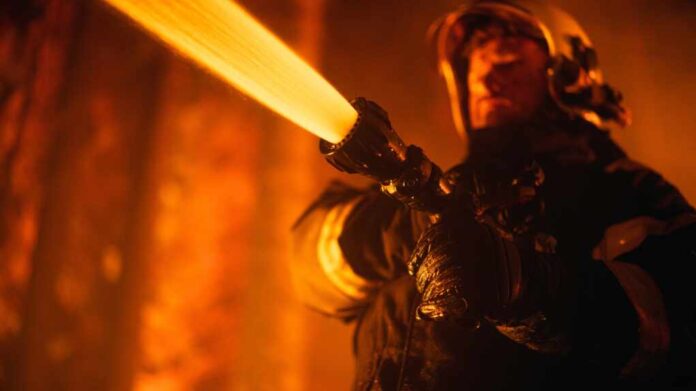
Thousands of Californians were forced to flee their homes as the Pack Fire exploded across Mono County, quickly growing to over 3,000 acres and reigniting pressing questions about government preparedness. This article argues that the crisis was worsened by years of bureaucratic mismanagement and policy failures, highlighting how swift, community-level action and local emergency services were the true heroes, underscoring the urgent need for a return to common-sense, conservative solutions for rural resilience.
Story Highlights
The Pack Fire in Mono County rapidly grew from 3 to over 3,000 acres, forcing mass evacuations and threatening over a thousand structures.
Evacuation orders remain in effect for Long Valley and McGee Creek, with Crowley Lake under continued warning as firefighters battle for containment.
Limited road access and years of drought, worsened by questionable state policies, complicated both evacuation and emergency response efforts.
Local emergency services, not distant federal bureaucrats, led the charge to protect property and lives, highlighting the importance of community-level action.
Pack Fire Ignites Crisis in Mono County Communities
On November 13, 2025, Mono County residents were forced into survival mode when the Pack Fire erupted near McGee Creek Road, west of Highway 395. What began as a small blaze quickly ballooned to more than 3,000 acres in less than a day, driven by high winds and dangerously dry conditions. Local authorities issued mandatory evacuations for the Long Valley and McGee Creek communities, while Crowley Lake residents waited anxiously under an evacuation warning, bracing for the fire’s next move.
This rapid escalation put nearly 1,800 residents and over 1,100 structures at immediate risk. Many evacuees found shelter at Mammoth Lakes Middle School and the Tri-County Fairgrounds, while emergency responders raced to contain the fire. The unified command structure—combining CAL FIRE, the Inyo National Forest, and local agencies—was essential in organizing resources and prioritizing public safety, demonstrating that, even in the face of disaster, community-level leadership outpaces distant bureaucracy in effectiveness.
The Pack Fire in Mono County, California, sent plumes of smoke billowing into the sky as it burned over 3,400 acres of land and at least 15 structures on Thursday. pic.twitter.com/4TN9NiFrjT
— AccuWeather (@accuweather) November 14, 2025
Decades of Policy Failures Undermine Wildfire Readiness
Mono County’s vulnerability to wildfires is no accident. Years of mismanagement—ranging from environmental overregulation to underfunded preparedness—have left communities exposed. Prolonged drought and rising temperatures, issues worsened by questionable state-level policy priorities in Sacramento, created a tinderbox. While local authorities and first responders worked tirelessly, their efforts were hampered by limited road access and insufficient infrastructure, both symptoms of a system that too often overlooks rural America in favor of urban political agendas.
The Pack Fire’s explosive growth mirrors previous disasters such as the 2020 Creek Fire and the 2021 Dixie Fire, both of which devastated wide swaths of California and revealed glaring weaknesses in emergency preparedness. Despite repeated warnings, policy focus has often shifted toward virtue-signaling projects and globalist ambitions, rather than investing in practical, on-the-ground fire prevention and rural resilience.
Local Heroes Lead as Big Government Lags
With the fire raging and evacuation orders expanding, real protection came not from distant agencies but from local emergency services and community leaders. CAL FIRE, the Long Valley Fire District, the Mono County Sheriff, and local volunteers coordinated under a unified command structure, deploying 30 engines, 6 water tenders, 4 dozers, and 368 personnel. Their swift mobilization likely saved countless lives and homes, while federal and state bureaucracies scrambled to catch up. It’s a stark reminder that community action and local decision-making remain America’s best defense in crisis, especially when higher-level agencies are slow or distracted by political priorities unrelated to citizens’ immediate needs.
Residents voiced frustration with the years of mounting risk and the political neglect of rural communities. Many called for a return to common-sense forest management, streamlined emergency funding, and less interference from officials who seem more concerned with optics than outcomes. There is renewed appreciation for policies that put local safety, property rights, and constitutional freedoms first—values that resonate deeply with Americans who believe in limited government and individual responsibility.
Ongoing Impact and the Case for Conservative Solutions
The Pack Fire’s aftermath leaves Mono County facing significant economic and social challenges. Local businesses and agriculture suffer disruptions, and evacuees deal with the trauma of displacement. Insurance claims and rebuilding costs will test the region’s resilience, while the need for effective fire management grows more urgent every year. As containment efforts continue, the event underscores the importance of supporting first responders, empowering local authorities, and rejecting top-down mandates that ignore the unique needs of rural America. Only by returning to proven conservative principles—prioritizing local action, responsible resource management, and rejecting bureaucratic overreach—can communities truly prepare for and withstand the crises ahead.
Watch the report: Pack Fire burns 3,400 acres in Mono County as evacuations expand
Sources:
Pack Fire explodes in Mono County, California, forcing evacuations as storm threatens mudslides in the south – CBS News
Fast-Growing Fire in Mono County, California, Forces Evacuations
Pack Fire hits 32% containment
Fast-Spreading Pack Fire Damages More Than a Dozen Structures as It Explodes in Size






















